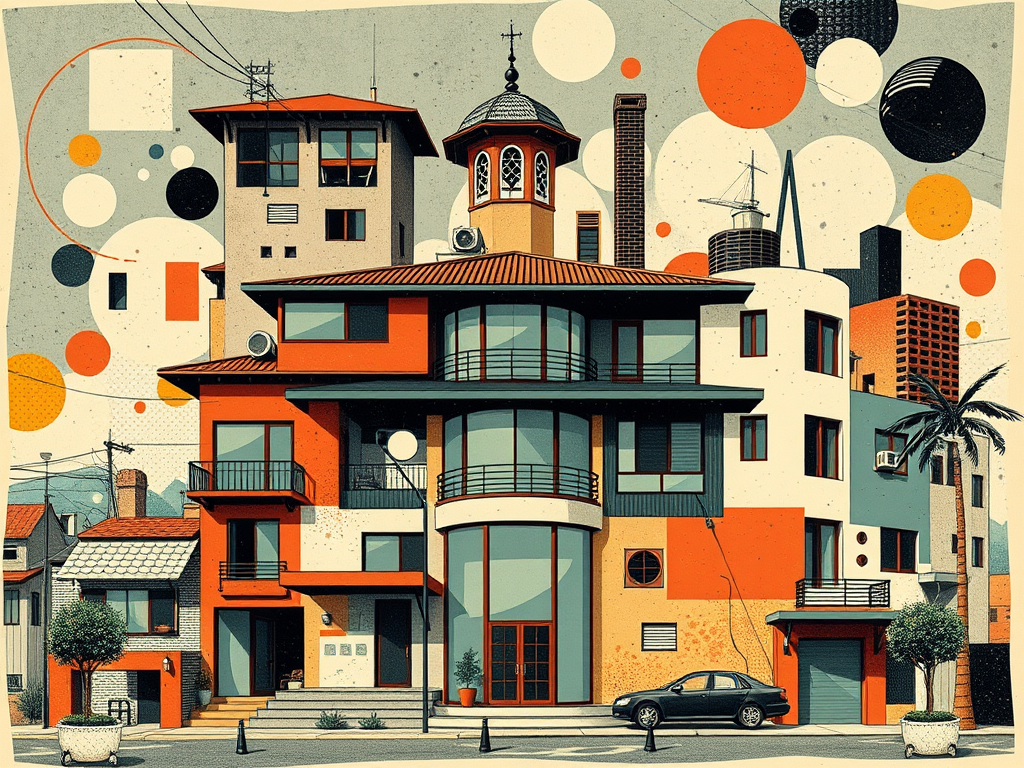Designing Your Greek Home: Blending Traditional Architecture with Modern Luxury

Designing Your Greek Home: Blending Traditional Architecture with Modern Luxury
Reading time: 15 minutes
Table of Contents
- Introduction
- Understanding Greek Architectural Heritage
- Key Elements of Traditional Greek Design
- Incorporating Modern Luxury into Greek Homes
- Balancing Tradition and Contemporary Aesthetics
- Sustainable Design Practices in Greek Architecture
- Regional Variations in Greek Home Design
- The Role of Outdoor Spaces in Greek Homes
- Interior Design Considerations
- Navigating Legal and Regulatory Aspects
- Budgeting and Financial Planning
- Conclusion
- FAQs
Introduction
Greece, with its rich historical tapestry and stunning landscapes, offers a unique canvas for architectural expression. The allure of owning a home in this Mediterranean paradise has captivated people worldwide, especially those looking to invest in property in peloponnese and other picturesque regions. However, designing a Greek home that honors traditional aesthetics while embracing modern luxury requires a delicate balance and deep understanding of both cultural heritage and contemporary design principles.
This comprehensive guide will explore the intricacies of Greek home design, offering insights into blending centuries-old architectural traditions with the comforts and sophistication of modern living. We’ll delve into the key elements that define Greek architecture, examine how to incorporate luxury features without compromising authenticity, and provide practical advice on navigating the design and construction process in Greece.
Understanding Greek Architectural Heritage
Greek architecture has left an indelible mark on Western civilization, influencing design principles for over two millennia. To truly appreciate and incorporate Greek architectural elements into a modern home, it’s essential to understand the historical context and evolution of Greek design.
Ancient Greek Architecture: The Foundation
The roots of Greek architecture can be traced back to the ancient civilizations that flourished in the Aegean region. Characterized by its emphasis on harmony, proportion, and simplicity, ancient Greek architecture laid the groundwork for many of the design principles we still use today.
Key features of ancient Greek architecture include:
- Columns and colonnades
- Pediments and friezes
- Symmetry and balance
- Use of local materials, particularly marble
- Integration with the natural landscape
These elements, while primarily associated with grand public buildings and temples, also influenced residential architecture, particularly in the design of courtyard houses and the use of open spaces.
Byzantine and Ottoman Influences
As Greece’s history unfolded, its architecture absorbed influences from the Byzantine Empire and later, the Ottoman period. These eras introduced new elements to Greek design, including:
- Domed structures
- Intricate mosaics and frescoes
- Arched windows and doorways
- Elaborate ornamentation
These influences can still be seen in many traditional Greek homes, particularly in the use of curved forms and decorative elements.
Vernacular Architecture: The Greek Island Style
Perhaps the most recognizable form of Greek residential architecture is the vernacular style found on the Greek islands. This style, which developed in response to local climate conditions and available materials, is characterized by:
- Whitewashed walls
- Flat or low-pitched roofs
- Small, deep-set windows
- Blue-painted woodwork
- Narrow, winding streets
This distinctive style has become synonymous with Greek island living and continues to inspire contemporary Greek home design.
Key Elements of Traditional Greek Design
When designing a Greek home that respects traditional aesthetics, several key elements should be considered:
Architectural Forms
- Simplicity of form: Clean lines and geometric shapes
- Cubist structures: Rectangular or square building volumes
- Emphasis on horizontality: Low-rise buildings that blend with the landscape
Materials and Textures
- Stone: Local varieties used for walls and foundations
- Marble: For decorative elements and flooring
- Wood: For beams, doors, and window frames
- Plaster: For smooth, whitewashed walls
Color Palette
- White: The dominant color for exterior walls
- Blue: Used for accents, particularly on doors and shutters
- Earth tones: Natural stone colors and terracotta
Architectural Features
- Courtyards: Central open spaces for gatherings and ventilation
- Terraces and balconies: Outdoor living spaces with sea or mountain views
- Arched doorways and windows: Adding character and visual interest
- Pergolas: Providing shade and defining outdoor areas
Incorporating Modern Luxury into Greek Homes
While honoring traditional Greek design is important, modern homeowners often seek the comforts and luxuries of contemporary living. Here’s how to seamlessly blend modern elements with traditional Greek architecture:
Open Floor Plans
Traditional Greek homes often featured separate rooms for different functions. Modern luxury homes, however, tend to favor open floor plans that create a sense of spaciousness and facilitate flow between living areas. To incorporate this concept:
- Combine living, dining, and kitchen areas into one large space
- Use partial walls or architectural elements to define zones without closing them off
- Ensure sight lines to outdoor areas and views
High-End Finishes
Elevate the traditional Greek aesthetic with luxurious materials and finishes:
- Use high-quality marble for flooring and countertops
- Incorporate custom-made wooden elements with fine craftsmanship
- Install designer lighting fixtures that complement the architectural style
- Choose premium appliances and fixtures for kitchens and bathrooms
Smart Home Technology
Integrate modern technology discreetly to enhance comfort and efficiency:
- Install smart climate control systems
- Implement automated lighting and shading solutions
- Incorporate home security and surveillance systems
- Use smart home hubs for centralized control of various functions
Luxury Amenities
Add features that elevate the living experience:
- Infinity pools with stunning views
- Home theaters or media rooms
- Spa-like bathrooms with high-end fixtures
- Wine cellars or tasting rooms
- Outdoor kitchens and entertainment areas
Balancing Tradition and Contemporary Aesthetics
The key to successful Greek home design lies in striking the right balance between traditional elements and modern luxury. Here are some strategies to achieve this harmony:
Respectful Modernization
When incorporating modern elements, do so in a way that respects the overall traditional aesthetic:
- Use clean lines and minimalist furnishings that complement rather than contrast with traditional architecture
- Choose contemporary interpretations of traditional Greek patterns for textiles and decorative elements
- Opt for modern materials that mimic the look and feel of traditional ones, such as engineered stone that resembles natural marble
Highlighting Traditional Features
Make traditional architectural elements the focal points of your design:
- Preserve and restore original features like stone walls or wooden beams
- Use lighting to accentuate traditional architectural elements
- Create contrast by pairing modern furnishings with traditional structural features
Blending Indoor and Outdoor Spaces
Emphasize the connection to nature, a hallmark of Greek living:
- Install large, energy-efficient windows to maximize views and natural light
- Use sliding or folding glass doors to create seamless transitions to outdoor areas
- Design outdoor living spaces that feel like natural extensions of the interior
Sustainable Design Practices in Greek Architecture
Incorporating sustainable design practices not only aligns with modern values but also resonates with the traditional Greek approach to architecture, which has always been mindful of the local environment.
Passive Solar Design
Utilize the principles of passive solar design, which have been inherent in Greek architecture for centuries:
- Orient the home to maximize natural light and heat gain in winter
- Use overhangs and pergolas for shading in summer
- Incorporate thermal mass materials like stone to regulate indoor temperatures
Energy Efficiency
Implement modern energy-efficient systems and materials:
- Install high-quality insulation in walls and roofs
- Use double or triple-glazed windows with low-E coatings
- Opt for energy-efficient appliances and LED lighting
- Consider solar panels for electricity and water heating
Water Conservation
In a country where water can be scarce, especially on the islands, water conservation is crucial:
- Install low-flow fixtures and dual-flush toilets
- Implement greywater recycling systems for irrigation
- Design landscaping with drought-resistant native plants
- Consider rainwater harvesting systems
Regional Variations in Greek Home Design
Greek architecture varies significantly across different regions, influenced by local climate, available materials, and historical influences. Understanding these regional variations can inform your design choices:
Island Architecture
The iconic Cycladic style is most associated with Greek island homes:
- Cubic forms with flat roofs
- Thick walls for insulation
- Small windows to protect against strong winds
- Extensive use of outdoor spaces like terraces and courtyards
Mainland Coastal Homes
Homes along the mainland coast often blend elements of island architecture with more varied styles:
- Larger windows to capture sea views
- More diverse color palettes
- Incorporation of local stone in construction
Mountain Retreats
In mountainous regions, homes are adapted to cooler climates and rugged terrain:
- Sloped roofs to shed snow
- Extensive use of wood in construction
- Larger fireplaces and heating systems
- Designs that maximize views of dramatic landscapes
The Role of Outdoor Spaces in Greek Homes
Outdoor living is an integral part of Greek culture and home design. When designing your Greek home, consider the following outdoor elements:
Terraces and Balconies
These spaces serve as extensions of the indoor living areas:
- Design multiple levels of terraces to maximize outdoor space
- Include built-in seating and dining areas
- Use pergolas or retractable awnings for shade
Courtyards
Central to traditional Greek home design, courtyards offer private outdoor spaces:
- Incorporate water features for cooling and ambiance
- Plant fragrant herbs and flowers typical of Greek gardens
- Use traditional paving materials like stone or terracotta tiles
Outdoor Kitchens
Perfect for entertaining and enjoying the Mediterranean climate:
- Install built-in grills or traditional wood-fired ovens
- Include ample counter space for food preparation
- Provide seating for casual dining
Interior Design Considerations
While the exterior of a Greek home often adheres to traditional aesthetics, the interior offers more flexibility for personal expression and modern comforts:
Color Palette
Interior colors can be more varied than the typical white and blue exterior:
- Use a base of neutral tones inspired by natural materials
- Incorporate pops of Mediterranean colors like turquoise, terracotta, and olive green
- Consider using whitewashed walls to create a bright, airy feel
Furniture and Decor
Blend traditional and contemporary elements:
- Choose simple, clean-lined furniture that doesn’t overwhelm the space
- Incorporate handcrafted items like woven baskets or ceramic vases
- Use textiles with traditional Greek patterns in modern color schemes
Lighting
Emphasize natural light while providing layered artificial lighting:
- Use sheer curtains to filter harsh sunlight
- Install dimmable recessed lighting for ambient illumination
- Incorporate statement lighting fixtures as artistic elements
Navigating Legal and Regulatory Aspects
Designing and building a home in Greece involves navigating various legal and regulatory requirements:
Zoning and Building Regulations
- Research local zoning laws and building codes
- Understand restrictions on building height, setbacks, and plot coverage
- Consider hiring a local architect familiar with regional regulations
Historical Preservation
- If renovating an older property, be aware of potential historical preservation requirements
- Consult with local authorities about any restrictions on modifications to traditional buildings
Environmental Considerations
- Understand regulations regarding energy efficiency and sustainability
- Be aware of any protected natural areas or species that might affect construction
Budgeting and Financial Planning
Developing a realistic budget is crucial when designing and building a Greek home:
Cost Considerations
- Research local construction costs and factor in potential fluctuations
- Budget for high-quality materials that will withstand the Mediterranean climate
- Consider the cost of importing specialized materials or furnishings
Investment Potential
- Assess the potential for rental income if you plan to use the property part-time
- Research property value trends in your chosen location
- Consider the impact of luxury amenities on resale value
Financing Options
- Explore both local and international financing options
- Understand the implications of currency exchange rates on your investment
- Consider working with a financial advisor familiar with Greek property investments
Conclusion
Designing a Greek home that blends traditional architecture with modern luxury is a rewarding endeavor that requires careful planning, creativity, and respect for cultural heritage. By understanding the key elements of Greek design, incorporating sustainable practices, and thoughtfully integrating modern amenities, you can create a home that is both a testament to Greece’s rich architectural history and a comfortable, luxurious retreat for modern living.
Remember that the essence of Greek home design lies in its harmony with the surrounding landscape, its emphasis on indoor-outdoor living, and its celebration of simplicity and natural beauty. Whether you’re renovating a traditional property or building a new home, the key is to strike a balance between honoring these timeless principles and meeting your contemporary lifestyle needs.
As you embark on your Greek home design journey, take the time to immerse yourself in the local culture, work with experienced professionals who understand both traditional and modern design principles, and remain flexible in your approach. The result will be a unique and personalized space that captures the spirit of Greek living while providing all the comforts of a modern luxury home.
FAQs
1. What are the most important traditional elements to include in a Greek home design?
The most important traditional elements include whitewashed walls, blue accents, use of natural stone, flat or low-pitched roofs, and ample outdoor living spaces such as terraces and courtyards. Incorporating these elements will help maintain the authentic Greek aesthetic.
2. How can I make my Greek home more energy-efficient?
To improve energy efficiency, consider installing solar panels, using high-quality insulation, implementing smart home systems for climate control, choosing energy-efficient appliances, and designing the home to maximize natural light and ventilation. These measures not only reduce energy consumption but also align with traditional Greek architectural principles of working with the natural environment.
3. Are there restrictions on building or renovating properties in Greece?
Yes, there are various regulations and restrictions, especially in areas of historical or environmental significance. These can include limitations on building height, plot coverage, and architectural style. It’s crucial to work with local architects and authorities to ensure compliance with all relevant regulations.
4. How can I incorporate modern luxury without compromising the traditional Greek style?
Balance is key. You can incorporate modern luxury by using high-end materials that complement traditional aesthetics, integrating smart home technology discreetly, creating open floor plans that respect the overall structure, and adding luxury amenities like infinity pools that enhance rather than detract from the traditional design.
5. What are some common challenges when designing a Greek home?
Common challenges include navigating local building regulations, sourcing authentic materials, balancing traditional design with modern comforts, adapting to the local climate (especially in terms of heat and sun exposure), and managing construction in sometimes remote locations. Working with experienced local professionals can help overcome these challenges.

Article reviewed by Mehmet Yılmaz, Business Transformation Leader | Operational Excellence Architect, on March 23, 2025




